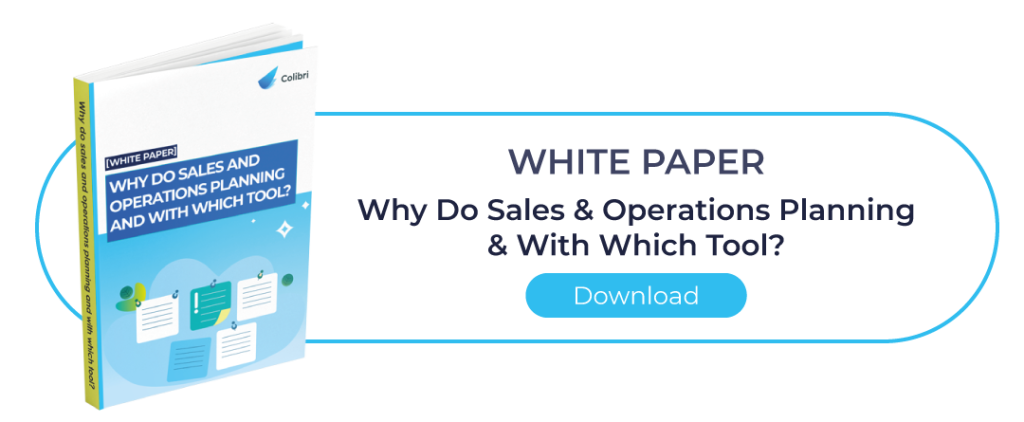Logistics and the supply chain are strategic links in the company. Faced with strong demand and greater volatility of supplies, the Supply Chain Director plays an essential role: he coordinates operations to increase the company’s competitiveness and performance by relying on a roadmap of Supply Chain solutions. But how do you design this roadmap to guarantee a controlled return on investment (ROI)? Discover our 5-step method!
Supply chain manager: what should your supply chain solutions roadmap include?
The Supply Chain Director must constantly adapt to the needs of the company, the expectations of customers and changes in the sector of activity. His primary role is to act on two principal axes: organisation and tools to combine flexibility, reactivity, and quality of service. His roadmap must be well thought out to carry out his mission successfully. It aims to :
- Review the organisation: set up an S&OP process, a sales forecasting unit or reorganise stock locations in the warehouse. For example: put ink cartridges next to printers in the warehouse if the orders include these two products in the majority of cases, i.e., classify by complementarity rather than by product type to facilitate order preparation.
- Equip yourself with new tools: invest in picking robots, handling tools, warehouse automation robots or software solutions. For example, a WMS that ensures the management of warehouse activities, sales forecasting software to anticipate decisions or a tool for optimising supplies.
Designing your supply chain solutions roadmap to control ROI better: 5 steps to follow
The roadmap is essential for controlling your entire project portfolio and achieving objectives within the set timeframe. How can you reconcile better organisation, increased performance, and cost control? Follow the guide!
1. Measure
To set up a practical roadmap, it is essential to have a factual understanding of supply chain performance to get off to a good start. Start by analysing the existing situation to determine where your company stands concerning:
- Logistics performance: measure the average time to prepare an order, the time to receive it, the transport costs, the occupancy rate of trucks, etc.
- Stock levels: assess stock levels in terms of days’ supply, stock obsolescence, destruction rates, financial tie-ups, stock-outs, etc.
- Customer service: estimate the percentage of products delivered on time, customer response times, time to market, etc.
- Customer satisfaction rate: how satisfied is the customer? What solutions should be implemented to ensure the customer is satisfied with his purchase?
- Costs: count the company’s overall expenses and supply chain costs.
2. Benchmark
Analysing and measuring your company’s situation helps determine the first levers and areas for improvement. Benchmarking is crucial to adopt the best strategy, to face competition and stand out.
How do you do that? By going to see what is happening elsewhere! Learned societies, associations such as Supply Chain Plus, Aslog, or even your past experiences or colleagues… Exchange ideas to discover new practices, explore new horizons and benefit from feedback. You can also call on a consulting firm to better analyse your indicators and benefit from expert advice.

3. Diagnose
Don’t forget to set improvement targets and make the right decision (e.g., lowering costs to make a very competitive offer or lowering delivery times).
Once you have defined a clear framework and understood what works and needs to be changed, it is time to know how to move your business towards these goals. To do this, it is necessary to :
- Audit the processes, why is there too much stock, why are the service rates unsatisfactory, why is it complicated to send certain orders… You need to find out where the gap between the measure and the ideal comes from to identify solutions to upgrade or stand out.
- Estimate the possible gains and deduct the benefits.
- To propose new organisational approaches in terms of communication, synchronisation, or the S&OP process.
- Review the organisation’s available tools: order preparation software, terminals for order preparation, sales forecasting software, supply planning software, etc.
4. Act
Now you have all the elements to take action! In concrete terms, you are in a position to estimate the project costs, the implementation costs, and the recurrent costs… In a word, you can evaluate the ROI of each project. Beware, Rome wasn’t built in a day: taking action doesn’t mean changing everything immediately! Instead, move forward in small steps with the idea of continuous improvement. Start, for example, with a pilot shop and measure progress by comparing it with the initial indicators. This allows you to identify what is working, what needs to be changed or improved, and whether the estimated ROI from the start equals the actual ROI.
In this continuous improvement process, do not forget one key factor: people. Rely on the experience of your colleagues, partners, associations, or consultancy firms... And surround yourself with the right skills internally, recruiting if necessary and offering a pleasant working environment with suitable tools to retain talent.
5. Equip yourself
Why invest in innovative supply chain tools? To better manage stocks, increase delivery performance, improve customer service, and save time, people, and money.
Are you hesitating between a Warehouse Management System (WMS) solution dedicated to warehouse and stock management and a Transport Management System (TMS) software to plan rounds, calculate delivery routes, optimise loads, and monitor the flow in real-time?
To make a smooth transition to the new performance tools, we have created an all-in-one solution that is quick and easy to implement and that allows you to :
- Planning and anticipating sales.
- Optimise supplies, transport, buy at the best price and supervise production.
- Improve customer service without overstocking.
Our S&OP solution Colibri includes demand planning, supply planning and strategic planning modules to better adapt to your needs. Starting with improved business management like Colibri almost always reduces operational difficulties by allowing everyone to anticipate better. It’s an excellent place to start. What’s more, Colibri is quick and easy to implement. So don’t wait any longer: ask for a demo!






